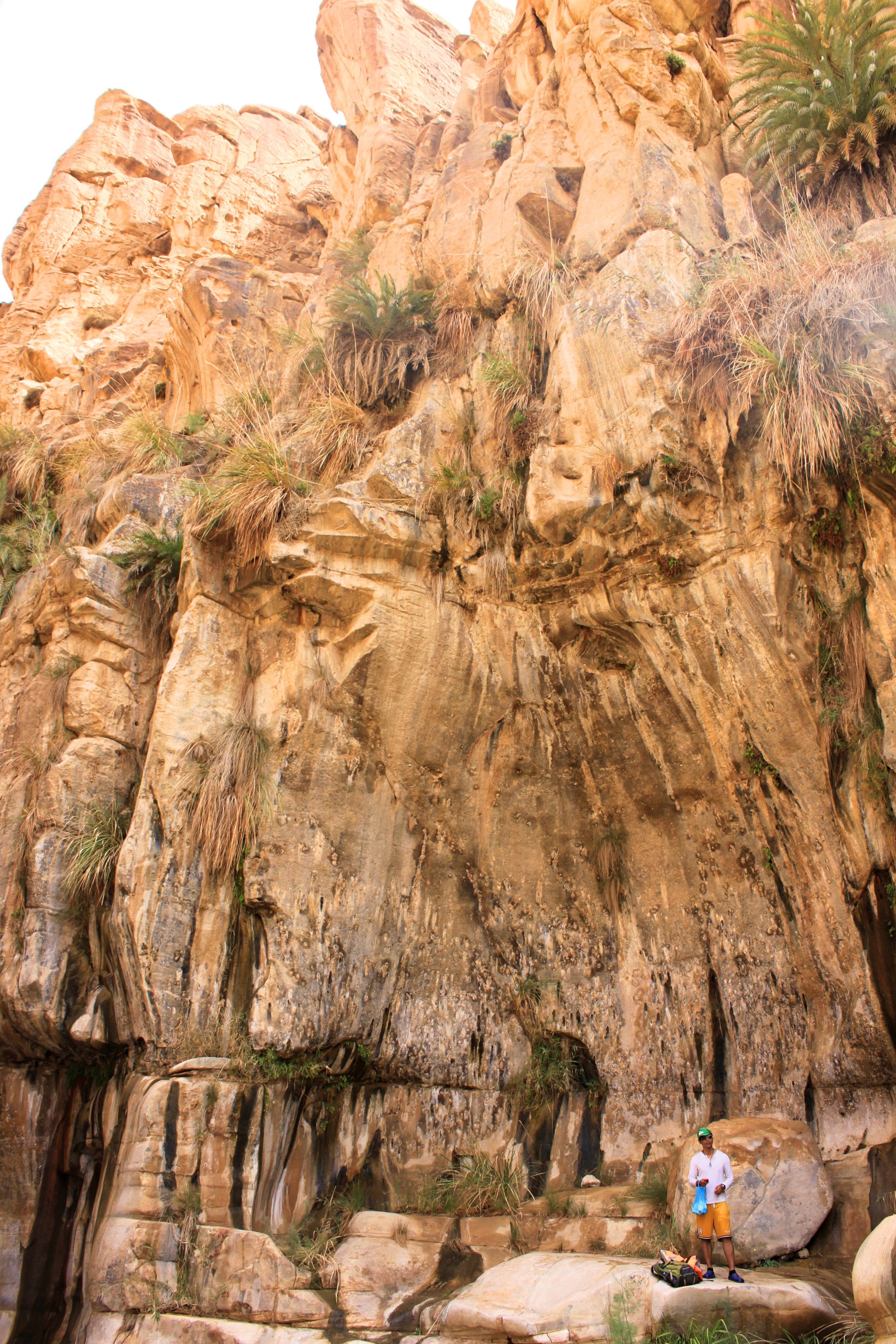Mujib River Canyon: Hiking through the lowest nature reserve on earth (Jordan)
(This blog post was written in 2011.)
The desert air pulls the liquid from my lungs with each step up the mountain. It has been 20 minutes of climbing on packed sand, with monstrous dunes breaking out of the earth in all directions. A perfectly placed rock face gathers seven of us underneath it as we slurp up the shade. We’re exploring the Mujib River Canyon, part of the Mujib Nature Reserve, the lowest altitude nature reserve on earth at just over 400 metres below sea level.
Another 15 minutes of steep terrain later and we are able to enjoy the massive ridges – each intricately designed by the wind – that make me feel like I’m walking through Giant Land in Super Mario Brothers 3. Except in the desert.
We descend back down until we reach the flowing Mujib River, which we crisscross for the next hour, the fresh water keeping our feet cool and the lenient current tugging against us as we cross. Bursts of green reed bed shoot out from the liquid floor, adding splashes of colour to the naked desert backdrop.
Without warning, we come to a dead end with shelves of bleached rock forms layered on top of one another. It’s a perfect picnic spot, one we will return to so we can enjoy our bagged lunch in about an hour.
Instead we turn left and come face to face with a narrow opening between towering walls, chocolate-coloured lines draped like curtains along the gorge sides. Wind and rushing water from one of the last wild rivers in the country carved this route over thousands of years. Along the sometimes neck-high river we slog, pointing out to each other the incredible patterns in the rocks that often look like wood grain, at other times like abstract paintings.
They lead us to another dead end, this one almost impossible to climb (although our guide shows us that it’s not actually impossible). We turn around and head back to the picnic spot, in need of a meal to re-fuel our bodies.
The next part of the route is called the Siq Trail and requires hiking and swimming through water for four hours. (The river continues further until it drains into the Dead Sea.) We come to yet another dead end, this time one with the sound of crashing water. Taking a peek over the edge, I see a 20-metre drop to the continuance of the river below: we must rappel down.
One by one we harness up and make our way to the edge. Turning to face the waterfall, I sit down in the harness and walk my feet down the wet rock wall step by step. The waterfall, not noticing my intrusion, continues pounding down with force in front of me, knocking my sandals from their feeble grip on the rock and dunking me whenever I slip.
I make it to the river below, look up at the thundering waterfall, and pause as the warm water sprays my face. Although Jordan is known for its parched desert, there is so much more to experience if you make the effort to explore deeper.
Jordan book recommendations: Lonely Planet Jordan, The Rough Guide to Jordan and Insight Guides Jordan.*
* The above links are to Amazon and are for your reference. I receive a small referral fee if you buy from Amazon. But I encourage you to buy books from any retailer, ideally your local bookstore!








